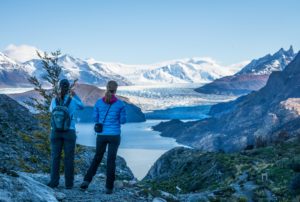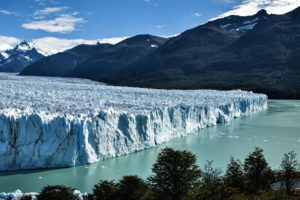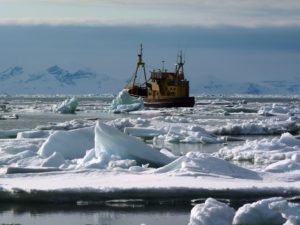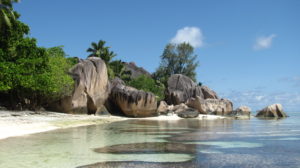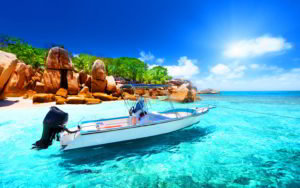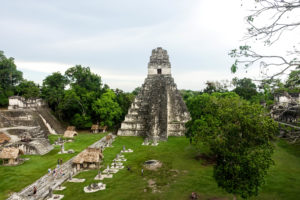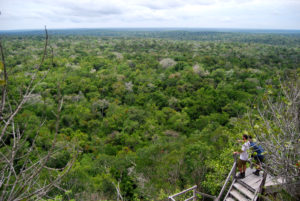At some point, the world map will be drastically redrawn. Climate change has ensured that there are several destinations facing the wrath of man-made disaster, destinations that may disappear in the next 50 to 100 years. They are, very obviously, the hottest destinations to travel to in 2017-2018.
Patagonia glaciers
Ask anyone who has the misfortune of travelling to New Delhi this November and dealing with the impregnable smog that seems to have taken over the city, and they will tell you how climate change and man-made disasters have contributed to reducing India’s capital to the world’s smog capital.
However, there are destinations that are far worst affected by climate change than Delhi right now, cities and towns that may disappear in the next 100 years. We spoke to luxury travel purveyors like Kuoni and Thomas Cook to put together a list of must-do destinations that you must go to, before they stop existing. And here is LuxuryNext’s list.
Patagonia’s Glaciers
The Perito Moreno glacier within the high-altitude Los Glaciers National Park in the Austral Andes of southwest Argentina is the third-largest reservoir of fresh water in the world. The Antarctic and Greenland ice sheets are the first- and second-largest frozen reservoirs respectively. Experts say that most of the 50 large glaciers are retreating slowly, due to warming temperatures.
Patagonia glaciers
This is one of the most expensive journeys you will take in this lifetime. Its jagged landscape, as they push out from their source, the massive South Patagonian Ice Cap. The melting glaciers now hung crumbling over cliffs, or have fallen into cobalt lagoons at the end of valleys. Explore them on boat trips, ice hikes and via kayak trips. Exploring Patagonia’s Atlantic coast is relatively easy: the Ruta Nacional 3 highway runs all the way from Buenos Aires to Rio Gallegos, where you take a ferry across the Strait of Magellan to Tierra del Fuego, to complete the 3,000 km run.
Where to stay: Territorio, Puerto Madryn
A stylish haute hotel right on the bay, equipped with library, spa, sauna and a good restaurant.hotelterritorio.com
The Polar Arctic
The lucky travelers who have made it to see the Polar ice caps have been reporting ice shelves that have broken off and the thawing of once-soaring glaciers, right in front of their eyes. Both the Antarctic Peninsula and Arctic are considered global hotspots, warming at double the average rate for the planet. In Norway’s Lofoten Islands north of the Arctic Circle, warmer temperatures have seen people walking about in shorts; temperatures in Arctic summer sometimes touch 25 degrees at the beginning of June.
Polar Travel
The Arctic is spread over eight countries: Canada, Denmark, Finland, Iceland, Norway, Russia, Sweden and the United States. Travellers to this threatened eco-system have increased over the years. Habasque’s company organizes trips for between 10 and 140 passengers for hiking, Nordic skiing or kayaking among icebergs, and has seen its business grow by 20 percent for polar trips.
Luxury polar tourism is continuing to get even bigger and better. Last December, J. Walter Thompson trend-forecasted polar travel as one of the 100 trends to watch in 2017. As the polar ice caps continue to shrink, there’s more open waterway for even more ships to make the journey to see them—before they disappear. In fact, Crystal Warner, the founder of New York based, Dream Maker Travel agency has called photographs shot in the Polar region as “the next Birkin bag”.
Trips to take: The 1,000-passenger luxury ship Crystal Serenity accesses the Arctic through the Northwest Passage, a journey made possible due to the melting Polar ice caps. Companies such as Arctic Canada and Quark Expeditions offer a more sustainable travel option and take fewer number of people, which is much-needed given that a deluge of tourists will further threaten this paradise.
Seychelles
Seychelles
Dramatically opposite to the glaciers and polar ice caps-dominated landscape, is the ocean paradise of Seychelles, a popular destination with sea worshippers. The islands of the Seychelles — located in the Indian Ocean, off the coast of Madagascar — are vanishing because of beach erosion, and are in danger of completely disappearing in the next 50 to 100 years.
Seychelles
This archipelago of 115 islands has a diverse eco-system: a huge line of beaches, coral reefs and nature reserves, rare animals such as giant Aldabra tortoises, and mountain rainforests of Morne Seychellois National Park and beaches, including Beau Vallon and Anse Takamaka.
Where to stay: The Six Senses Zil Pasyon, on the private island of Félicité has 30 villas facing the ocean and private plunge pools, while the Four Seasons on Petite Anse is an exclusive resort facing the turquoise blue ocean.
Mirador Basin and Tikal National Park, Guatemala
This stretch is home to the mysterious ruins of the Mayan civilization. Located within dense forests, these UNESCO world heritage site are threatened by climate change. The forests are shrinking due to rampant forest fires, caused by temperature rise and man-made fires.
Tikal, Gautemala
The Mayan civilization inhabited these forests from the 6th century B.C. to the 10th century A.D. The ceremonial center contains beautiful temples, palaces, and public squares accessed by means of ramps. The remains of the Mayan dwellings are scattered throughout the surrounding countryside.
The Tikal National is located in the Northern Guatemala’s Province, in a large forest tract known as the Maya forest. It extends into neighbouring Mexico and Belize. Within the Maya Biosphere Reserve lies a beautiful two million hectares of lush forest, 57,000 hectares of wetlands, savannah, and tropical broadleaf and palm forests with thousands of remains of the Mayan civilization.
The National Park, Tikal, Gautemala
Where to stay: Close to the National Park is a range of beautiful boutique hotels like Las Lagunas, Hotel Vila del Lago, Hotel Jungle Lodge Tikal, and Le Casa de Don David.

